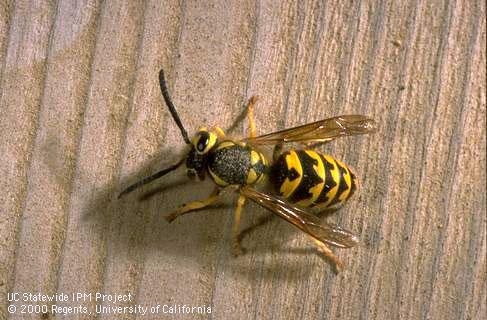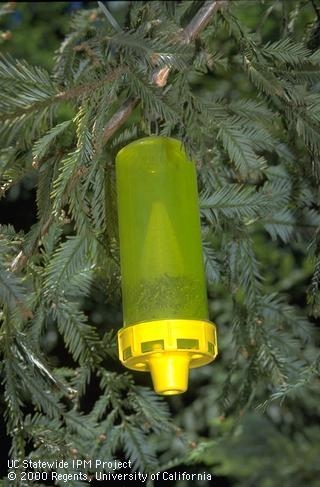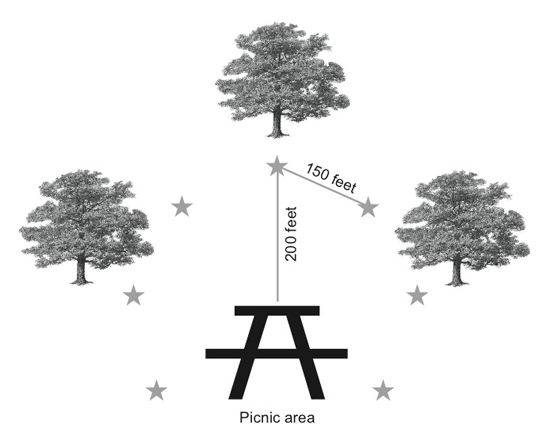
Traps don't eliminate large populations but can help reduce numbers of localized foraging workers. Lure traps contain a chemical that attracts yellowjackets into the traps, but the common lure in traps, heptyl butyrate, attracts primarily the western yellowjacket, Vespula pensylvanica, the most commonly encountered species in California, but not other species. Meat such as fresh chicken can be added as an attractant and is believed to improve catches of the German yellowjacket, V. germanica, and V. vulgaris. Periodically check the trap to remove dead yellowjackets and make sure workers are still attracted to the trap. Lures need to be replaced periodically; follow trap directions regarding replacement. If you added meat to your trap, replace the bait frequently, because yellowjackets aren't attracted to rotting or dried meat.

In backyards, place the traps along the edge of the property line as far away from the patio or other protected area as possible. It is important to place the traps between the area to be protected and the native landscapes serving as nesting sites to intercept foraging yellowjackets. Typically yellowjackets will forage about ¼ mile. Figure 3 shows a suggested placement for traps.
To get the best effect from traps, remove other yellowjacket attractants such as trash, rotting fruit on or under trees, soda cans, and outdoor food.
For more information about yellowjackets and their management, see the UC IPM Pest Note: Yellowjackets and watch UC IPM's video How to reduce yellowjackets around your yard.
Figure 3. Placement of lure traps, represented by stars, to protect a picnic area in a park. Place the traps about 200 feet from the protected area and about 150 feet apart. In backyards, place the traps around the periphery of the property as far away from the patio orother protected area as possible.
Modified from the original article in the June 2012 issue of UC IPM's Retail Nursery and Garden Center IPM News.
Editor - Associate Director for Urban & Community IPM/ Area Urban IPM Advisor
